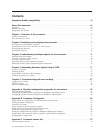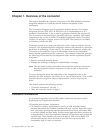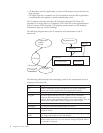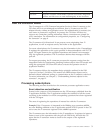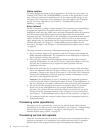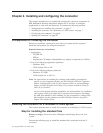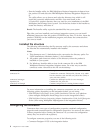
Chapter 1. Overview of the connector
This chapter describes the connector component of the IBM WebSphere Business
Integration Adapter for i2 and the relevant business integration system
architecture.
The i2 connector integrates with i2 application modules through i2’s Common
Integration Services (CIS) API. CIS API from i2 is an implementation of JCA
Common Client Interface. i2 has a suite of application modules that support CIS.
The i2 connector is metadata driven, has object discovery capability, and enables
integration to any version 6.0 SDK CIS-enabled i2 application. Many i2 modules
versions 5.2 and above, support version 6.0 CIS SDK. This connector is available
on Windows, Solaris, and AIX.
Connectors consist of two parts: the application-specific component and the connector
framework. The application-specific component contains code tailored to a particular
application or technology (in this case, i2). The connector framework, whose code
is common to all connectors, acts as an intermediary between the integration
broker and the application-specific component. The connector framework provides
the following services between the integration broker and the application-specific
component:
v Receives and sends business objects
v Manages the exchange of startup and administrative messages
Note: This document contains information about both the connector framework
and the application-specific component. It refers to both of these as the
connector.
For more information about the relationship of the integration broker to the
connector, see IBM WebSphere InterChange Server System Administration Guide or IBM
WebSphere Business Integration Adapters Implementation Guide for MQ Integrator
Broker.
This chapter contains the following sections:
v “Connector architecture” on page 1
v “How the connector works” on page 3
Connector architecture
i2’s Common Integration Service (CIS) enables connectivity between external
applications and i2 application modules.
CIS includes three primary components:
v CIS Front Bus--used by applications to specify an XML metadata format
interface that details the available functions and their expected input and output
data. CIS scripts generate the required representations of input and output data
in an XML schema and Java Beans. Product teams implement these functions by
writing handlers in Java that implement standard CIS interfaces and perform the
required logic. These handlers can deal with data as XML or Java Beans. CIS
infrastructure deploys these interfaces so that the client can invoke this
functionality from a variety of resources.
© Copyright IBM Corp. 2002, 2003 1







